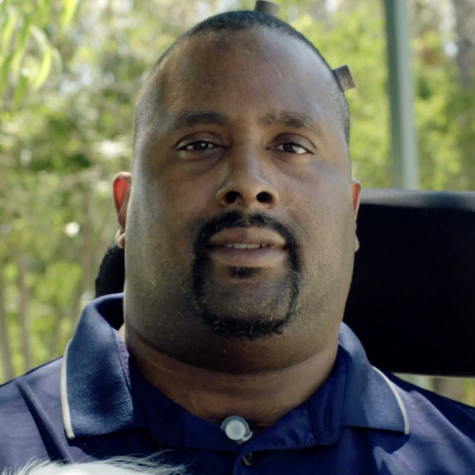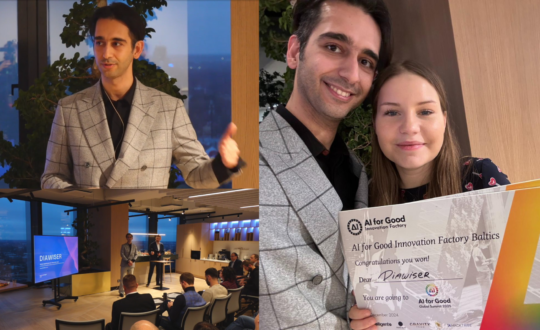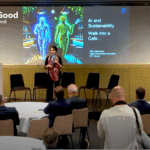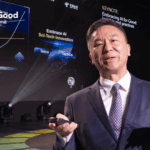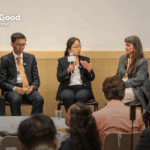The AI for Good Global Summit recently featured a riveting session moderated by Taryn Southern, a storyteller and strategist known for her unique perspective on the intersection of technology and narrative. This session brought together Jorge Gomez de Leon, a researcher at Caltech, and James Johnson, a participant in Caltech’s groundbreaking brain-machine interface (BMI) research. The discussion showcased the transformative potential of neurotechnology and its profound impact on individuals’ lives.
Taryn Southern began the session by sharing her journey from storytelling to neurotechnology, quoting Arthur C. Clarke,
“Any sufficiently advanced technology is indistinguishable from magic.”
Southern passionately described how storytelling bridges the gap between imagination and discovery, and how neurotechnology exemplifies this connection, and mentioned the once science-fiction capabilities now made possible through BMIs.
James Johnson’s Transformative Experience
James Johnson is a former respiratory therapist whose life changed dramatically following a paramotor accident that left him paralyzed. Despite the severe injury, Johnson’s determination and hope led him to participate in Caltech’s BMI study. This decision marked the beginning of an extraordinary journey where he regained significant capabilities through the power of brain-machine interfacing.
Johnson shared his profound experience with the audience, highlighting the challenges he faced post-accident and the miraculous nature of the technology that allowed him to regain a semblance of his previous life.
“Thanks to this technology, I was able to find a way to regain some of what I lost, and that’s nothing short of a miracle,” Johnson expressed.
The Science Behind the Magic
Jorge Gomez de Leon provided a deeper understanding of the intricate process involved in setting up and running experiments with BMIs. Johnson has two brain chips implanted, enabling the researchers to connect his brain to a computer and decode his motor intentions. “Every time that he comes to our laboratory, we have to connect these cables that we can see on his head. And then we start doing some simple tasks that allow us to read his brain signals,” Gomez de Leon elaborated.
The mechanics behind this technology involve a microelectrode array called the Utah Array. This device, with its 100 tiny silicon electrodes, connects to neurons in the brain and sends signals to a decoder. This decoder, through an algorithm, translates these signals into digital commands, enabling seamless interaction with devices such as wheelchairs, robotic arms, or computers. This technology enables patients with disorders, paralysis, or neurodegenerative diseases to communicate, feel, and move once again.
The dynamic nature of the brain necessitates daily training of the machine learning algorithms used to decode Johnson’s brain signals. “The neurons around it change a little bit every day. So, the signals that we are getting are changing in time, that’s why we need to let these algorithms know how these neurons are encoding the information in one particular day,” he added.
To illustrate the real-world applications of this technology, the session featured compelling video demonstrations of Johnson using the BMI to control a computer cursor and create art using Photoshop, an activity he cherished before his accident.
“The fact that I can control the computer, the cursor, just by thinking about it, is mind-blowing,” Johnson marveled.
His artwork, showcased in various exhibits, stands as a testament to the incredible possibilities of this technology.
Exploring the Boundaries of BMI
Johnson’s enthusiasm for the BMI technology extends beyond art. He spoke about his involvement in controlling robotic arms and other devices, constantly pushing the boundaries of what is possible. “Every time I get set up, it’s always something new, whether it be controlling a computer interface or controlling an external device like the helmet, VR… it’s always something new,” Johnson shared.
One of his hopes for the future is to develop an exoskeleton that would allow him to grasp objects with his hands. “If we can put an external exoskeleton, that would allow me to close my fingers and grasp again. Then that would give me a greater degree of freedom to really create some incredible pieces on Photoshop again,” he envisioned. Southern added, “And you could even pick up a physical paintbrush, you could be cooking in the kitchen, you could do so many things with a robotic arm that allows for you to do that.”
Challenges and Optimism
Despite the remarkable advancements, Gomez de Leon acknowledged the challenges inherent in this nascent technology.
“It has a lot of moving parts, the cables, the electrodes, the algorithms… So, it’s always hard to make everything work at the same time,” he said.
However, the breakthroughs in AI and machine learning give hope for further enhancing BMI capabilities.
“I think that in our field, AI is being underused. There is a lot of space to incorporate new algorithms that can decode brain signals better, and that will give James more control,” Gomez de Leon noted.
Southern queried about the role of AI in these advancements, to which Gomez de Leon responded, “One of our main findings in our laboratory is that the human brain is more complex than we expected. From these brain chips that James has implanted, we can actually decode the movement of his whole body.”
Johnson’s journey is emblematic of the pioneering spirit driving this research. Reflecting on his participation, he stated, “For me, it’s the discovery of what we can apply what we’re decoding in a real-world sense. We are on the cusp of something incredible at this point.”
The Road Ahead
The session concluded with an optimistic view of the future of BMIs. Southern highlighted the importance of implantable technology for achieving the magical possibilities seen on screen.
“The human brain has hundreds of billions of neurons that are working at the same time. With EEG technology, for example, what we can record is the information of hundreds of thousands or millions of neurons at the same time. So, it’s very hard to get a clear signal,” Gomez de Leon explained, emphasizing the precision offered by intracortical recordings.
Johnson reflected on his decision to undergo brain surgery for the implants, a decision made after thorough discussions with his family. Given his background working with neuro patients, he was familiar with the areas of the brain targeted for the microchips and felt comfortable proceeding. This familiarity and understanding underscored his commitment to advancing this technology.
He also shared his hopes for the future: “I would like to get behind the wheel and gain more independence […] within my environment and be able to use an attached limb to open a door so I can go outside whenever I want to. We are ever so close to having that reality.”
Gomez de Leon echoed this sentiment, envisioning real-life applications beyond the laboratory. He expressed confidence that the technology was ready for daily use, while acknowledging that there was still room for improvement. He looked forward to seeing new applications that could significantly enhance the lives of participants.
This session at the AI for Good Global Summit stands as a compelling testament to the transformative power of BMI. Through the voices of Taryn Southern, Jorge Gomez de Leon, and James Johnson, the audience witnessed the convergence of science and storytelling, and the boundless potential of technology to reshape lives. As Southern aptly put it, “These individuals do not wear capes nor do they star in blockbuster movies, but they are absolutely charting new frontiers in science and redefining future possibilities for people with disabilities.” The future of BMI holds promise not just for those with disabilities, but for the advancement of human potential itself.






